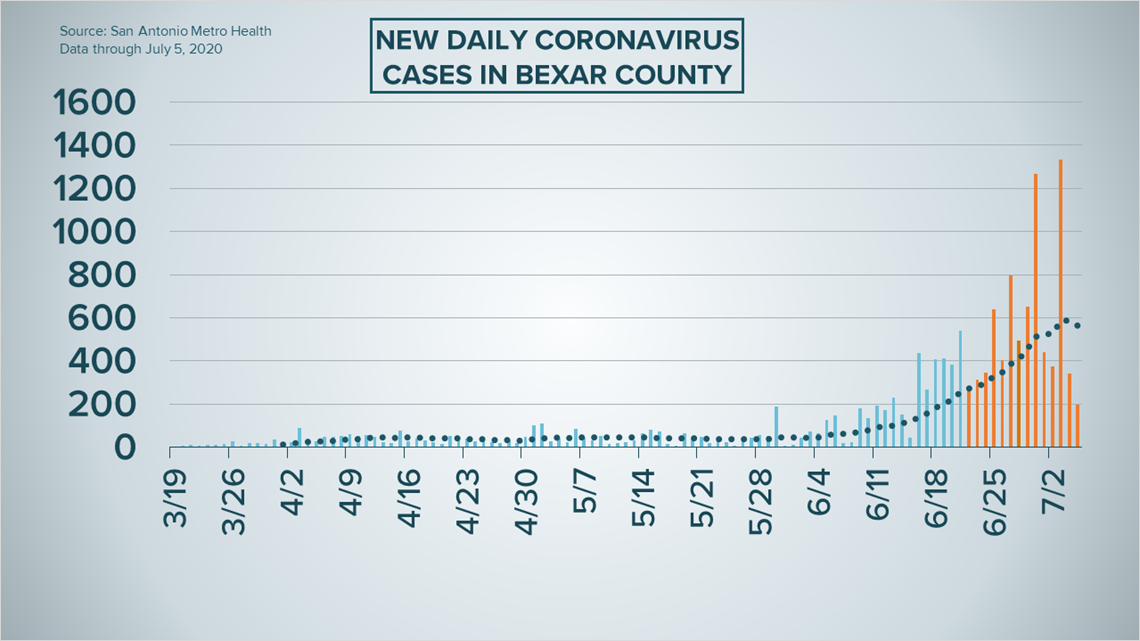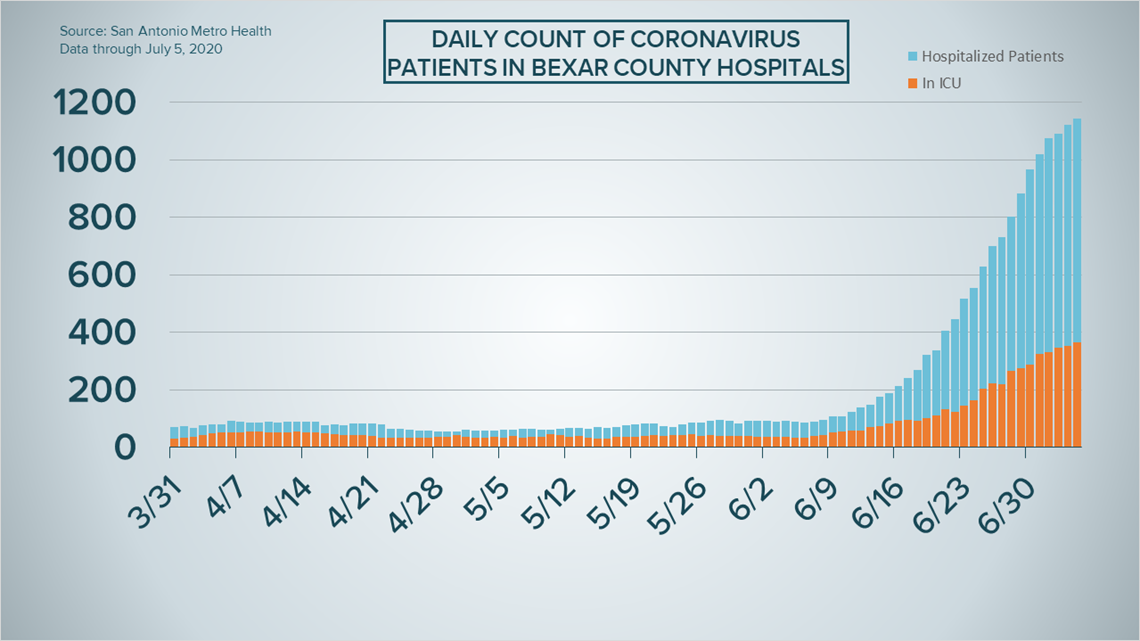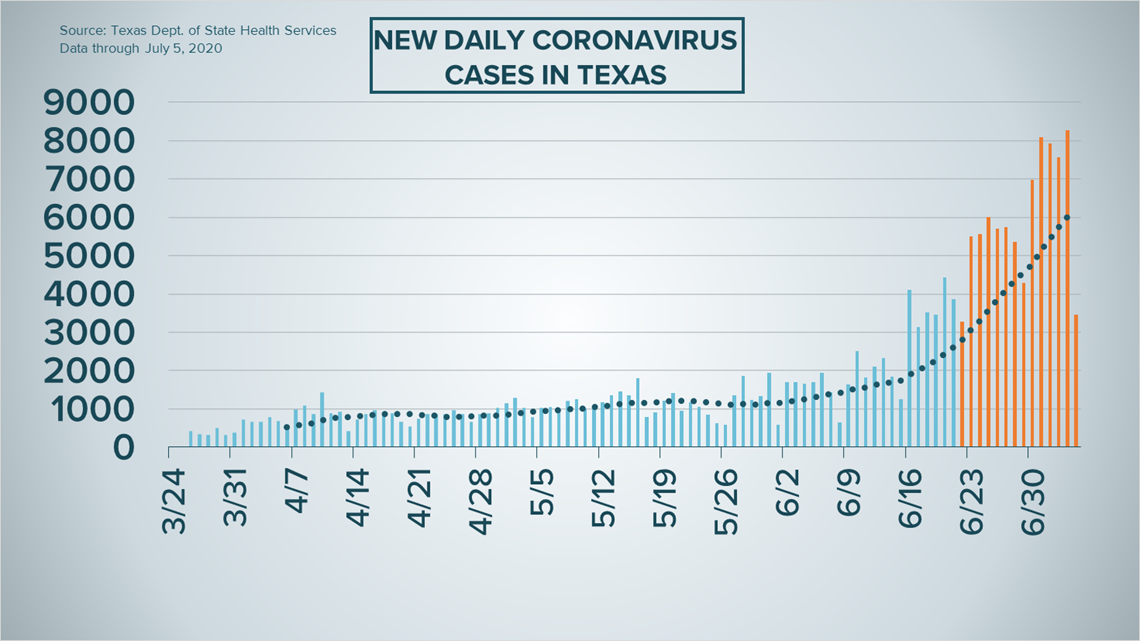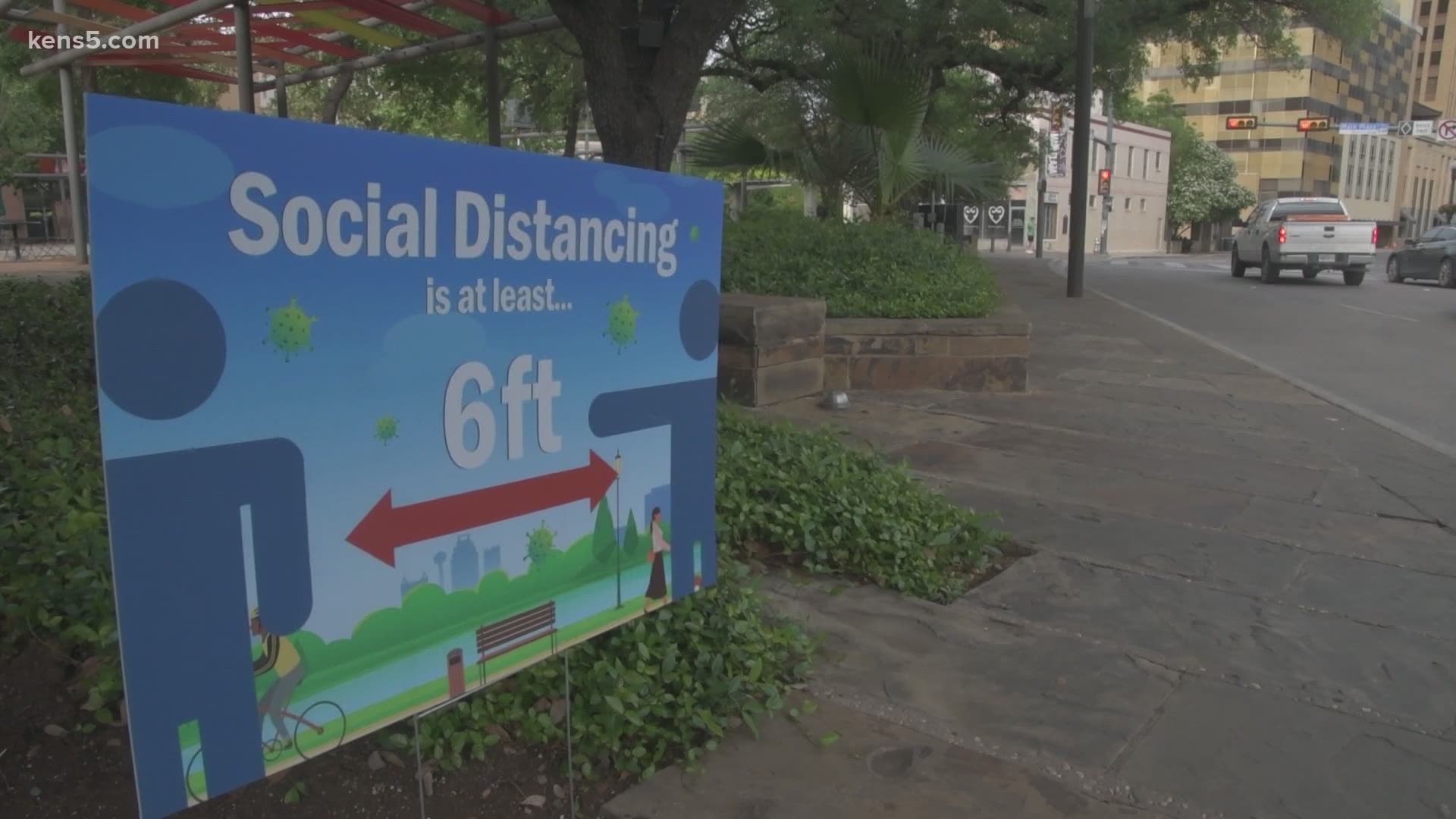SAN ANTONIO — We're tracking the latest numbers from the coronavirus pandemic in San Antonio and across Texas. Here are the latest numbers reported by Bexar and surrounding counties:
- Bexar County: 198 new cases were reported by Metro Health Sunday, along with 8 more virus-related deaths. There is now a total of 14,751 cases and 130 fatalities in the county.
- Comal County: The county reported 71 new coronavirus cases and one fatality Friday. Nine people have now died in the county, while 301 have recovered. The positivity rate has risen to 12.67%, the highest the county has recorded since the pandemic began. As of Friday, there is a total of 907 confirmed and probable coronavirus cases in Comal County.
- Hays County: 126 new cases were reported Thursday, bringing the total to 3,050 cases and seven fatalities in the county. 84% of those cases are considered active, and just under half of the county's confirmed cases are young people between the ages of 20 and 29.
Bexar County reports the full numbers daily at 7 p.m.
How Bexar County is trending:
We're tracking how many coronavirus cases are confirmed in Bexar County each day from the time San Antonio Metro Health began reporting cases more than two months ago. Graphing those daily case numbers along a 14-day moving average provides an accurate picture of the curve in the San Antonio area and the direction we're heading amid the coronavirus.
On Sunday evening, Metro Health reported 198 newly confirmed cases of the novel coronavirus. The total number of cases in Bexar County during the pandemic is now 14,751.


Eight new deaths were reported, a new record for single-day death toll in the county since the start of the pandemic. Bexar County reported the first death of a person under the age of 20.
The local death toll from COVID-19-related complications is now 130.
Mayor Ron Nirenberg posted a video in response to Sunday's report, asking San Antonians to remember the eight dead not as numbers but as "mothers, fathers, grandparents, sons, daughters, friends, and neighbors."
The number of local COVID-19-positive patients currently in area hospitals, meanwhile, rose once again to 1142. 365 patients are in intensive care, and 197 are on ventilators. All of those numbers are new record highs for the county.


Nirenberg said Sunday that as local hospitals near capacity, "it's difficult to imagine that tonight will be the last time we report another life lost to COVID-19 in San Antonio. And that reality is beyond harrowing; it's gut-wrenching. It's morbid. And it's cruel."
Nirenberg urged San Antonians to stay home when they can.
Coronavirus in Texas
State health officials reported an all-time high count of 3,449 new coronavirus cases on Sunday, bringing the total to 195,239. This is the lowest number of new cases in over two weeks.


Meanwhile, an additional 29 virus-related deaths were reported by the state on Sunday, raising the death toll to 2,637. Current hospitalizations also reached a new all-time high, with 8,181 Texans in hospitals with COVID-19 on Sunday; that's 291 more than Saturday.
Latest Coronavirus Headlines
- City of San Antonio testing sites will only test people with coronavirus symptoms
- Achieving a work-life balance while working from home
- 'We'll probably see some copycats' | BBB warns SA businesses of mask exempt card scheme
- How to avoid 'mascne'| Keep your skin healthy while wearing a mask
- Bexar County inmate dies at Adult Detention Center
- FDA head rejects Trump's 'harmless' coronavirus claim
- Florida coronavirus deaths, new cases, hospitalizations, ICU capacity, recoveries
- US holiday fuels worries about skyrocketing coronavirus cases
- US dips under 50,000 new coronavirus cases
- Inside Texas Politics: Austin mayor says based on current COVID-19 trajectory, city could run out of hospital beds in 2 weeks
Coronavirus symptoms
The symptoms of coronavirus can be similar to the flu or a bad cold. Symptoms include fever or chills, cough, shortness of breath or difficulty breathing, fatigue, muscle or body aches, headache, new loss of taste or smell sore throat, congestion or runny nose, nausea or vomiting and diarrhea, according to the Centers for Disease Control.
Most healthy people will have mild symptoms. A study of more than 72,000 patients by the Centers for Disease Control in China showed 80 percent of the cases there were mild.
But infections can cause pneumonia, severe acute respiratory syndrome, kidney failure, and even death, according to the World Health Organization. Older people with underlying health conditions are most at risk.
On June 25, the CDC expanded the list of groups at a higher risk of severe illness due to coronavirus.
Experts determined there was consistent evidence these conditions increase a person's risk, regardless of age:
- Chronic kidney disease
- COPD (chronic obstructive pulmonary disease)
- Obesity (BMI of 30 or higher)
- Immunocompromised state (weakened immune system) from solid organ transplant
- Serious heart conditions, such as heart failure, coronary artery disease, or cardiomyopathies
- Sickle cell disease
- Type 2 diabetes
The CDC believes symptoms may appear anywhere from two to 14 days after being exposed.
Human coronaviruses are usually spread...
- Between people who are in close contact with one another (within about 6 feet).
- Through respiratory droplets produced when an infected person coughs, sneezes or talks. These droplets can land in the mouths or noses of people who are nearby or possibly be inhaled into the lungs.
- Some recent studies have suggested that COVID-19 may be spread by people who are not showing symptoms.
Help stop the spread of coronavirus
- Stay home when you are sick.
- Eat and sleep separately from your family members
- Use different utensils and dishes
- Cover your cough or sneeze with your arm, not your hand.
- If you use a tissue, throw it in the trash.
Lower your risk
- Wash your hands often with soap and water for at least 20 seconds. If soap and water are not available, use an alcohol-based hand sanitizer.
- Avoid touching your eyes, nose, and mouth with unwashed hands.
- Avoid close contact with people who are sick.
- Clean and disinfect frequently touched objects and surfaces.
- The CDC recommends wearing a mask or cloth face covering if you have to be out due to an essential service or essential activity such as going to the grocery store.
- If you are 60 or over and have an underlying health condition such as cardiovascular disease, diabetes or respiratory illnesses like asthma or COPD, the World Health Organization advises you to try to avoid crowds or places where you might interact with people who are sick.

